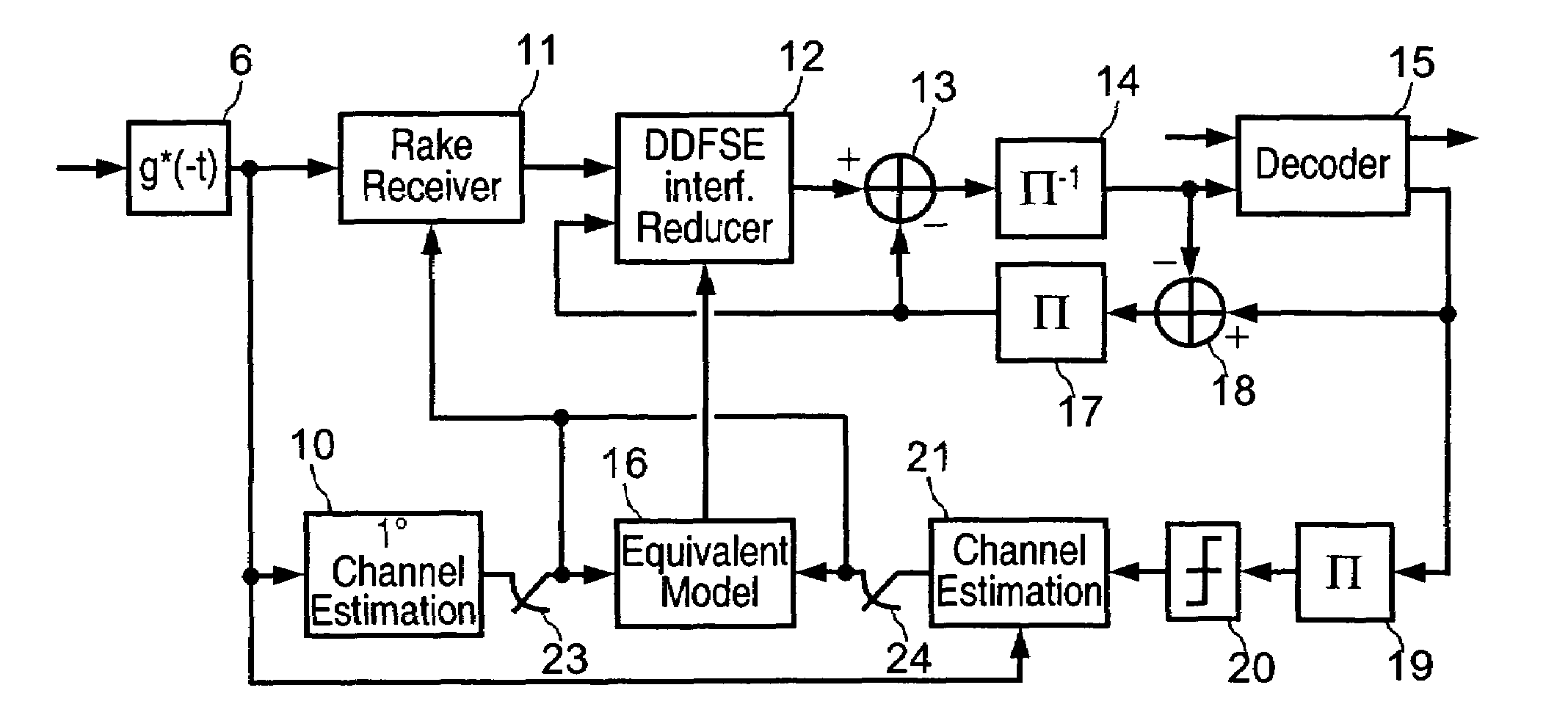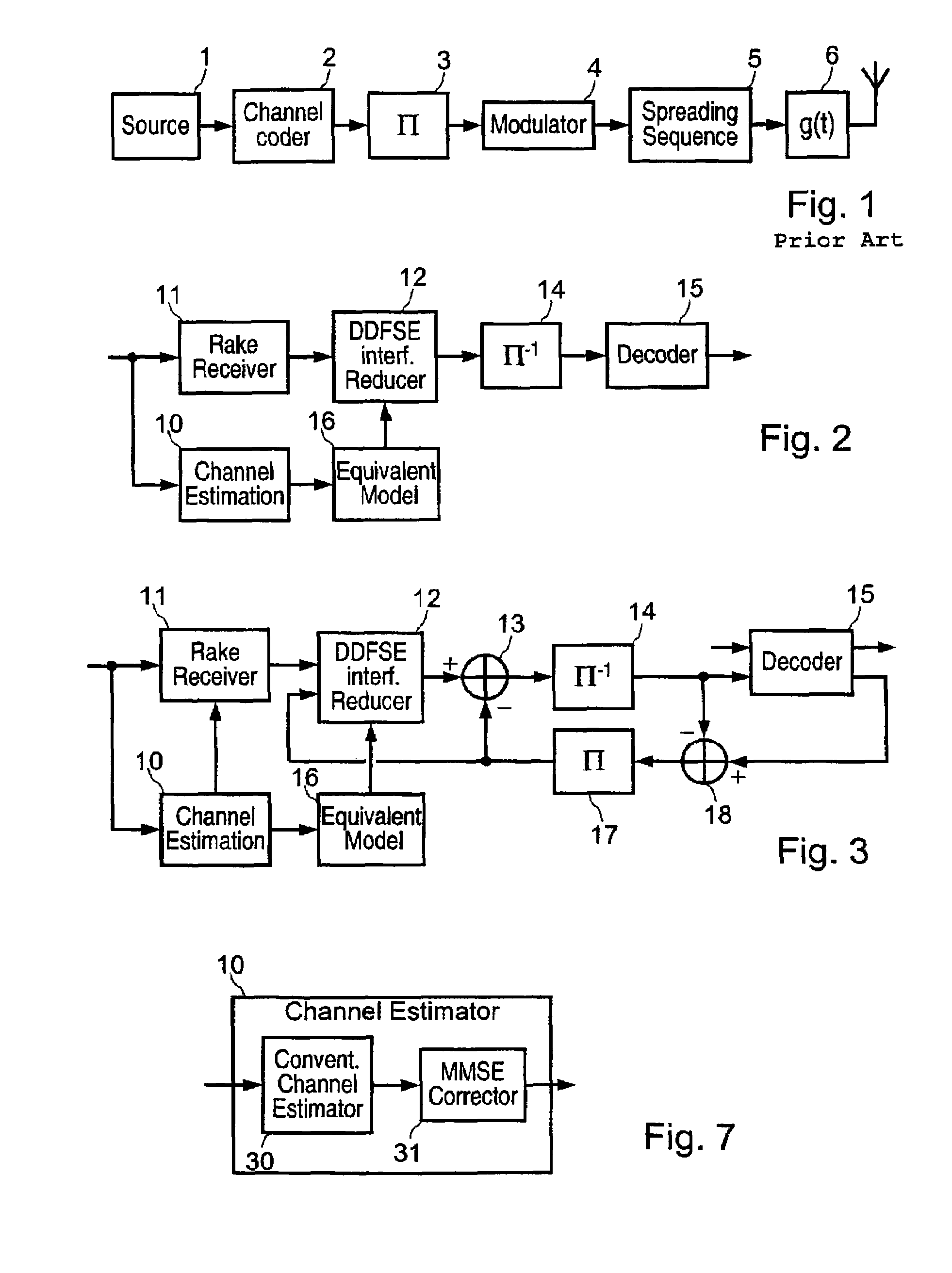Sub-optimal iterative receiver method and system for a high-bit-rate CDMA transmission system
a transmission system and receiver technology, applied in the field of suboptimal iterative receiver methods and systems for highbitrate cdma transmission systems, can solve the problems of serious deformation of the performance of the rake receiver, interference between symbols of the same transmitted signal, and the inability to meet the high-bit-rate packet service. , to achieve the effect of low spreading factor, high order modulation, and close to optimum performan
- Summary
- Abstract
- Description
- Claims
- Application Information
AI Technical Summary
Benefits of technology
Problems solved by technology
Method used
Image
Examples
Embodiment Construction
[0061]FIG. 1 shows a prior art CDMA transmitter, comprising a signal source 1 supplying sequences of τ0 binary symbols u1τ0={u1, . . . , uτ0}T and a channel encoder 2 that supplies a coded sequence c1τ0={c1, . . . , cτ0}T.
[0062]Each data symbol un={un,1, . . . , un,k0)T contains k0 bits and each symbol cn={cn,1, . . . , cn,n0}T contains n0 bits. The coded bits are interleaved by an interleaver 3 and padded out to correspond to a predetermined transmission format, i.e. frames of length τ containing pilot symbols to allow a receiver to carry out channel estimation. The resulting bits are grouped into symbols of type ak=(ak,l, . . . , ak,q) containing q bits before they are fed to a modulator 4 performing M-th order phase-shift keying (M-PSK), MAQ16 or MAQ64, which supplies a corresponding modulated symbol s(k).
[0063]The signal s(k) is then multiplied at 5 by a predefined spreading sequence c(q) for the transmission in question, the resulting signal being passed through a raised cosine...
PUM
 Login to View More
Login to View More Abstract
Description
Claims
Application Information
 Login to View More
Login to View More - R&D
- Intellectual Property
- Life Sciences
- Materials
- Tech Scout
- Unparalleled Data Quality
- Higher Quality Content
- 60% Fewer Hallucinations
Browse by: Latest US Patents, China's latest patents, Technical Efficacy Thesaurus, Application Domain, Technology Topic, Popular Technical Reports.
© 2025 PatSnap. All rights reserved.Legal|Privacy policy|Modern Slavery Act Transparency Statement|Sitemap|About US| Contact US: help@patsnap.com



